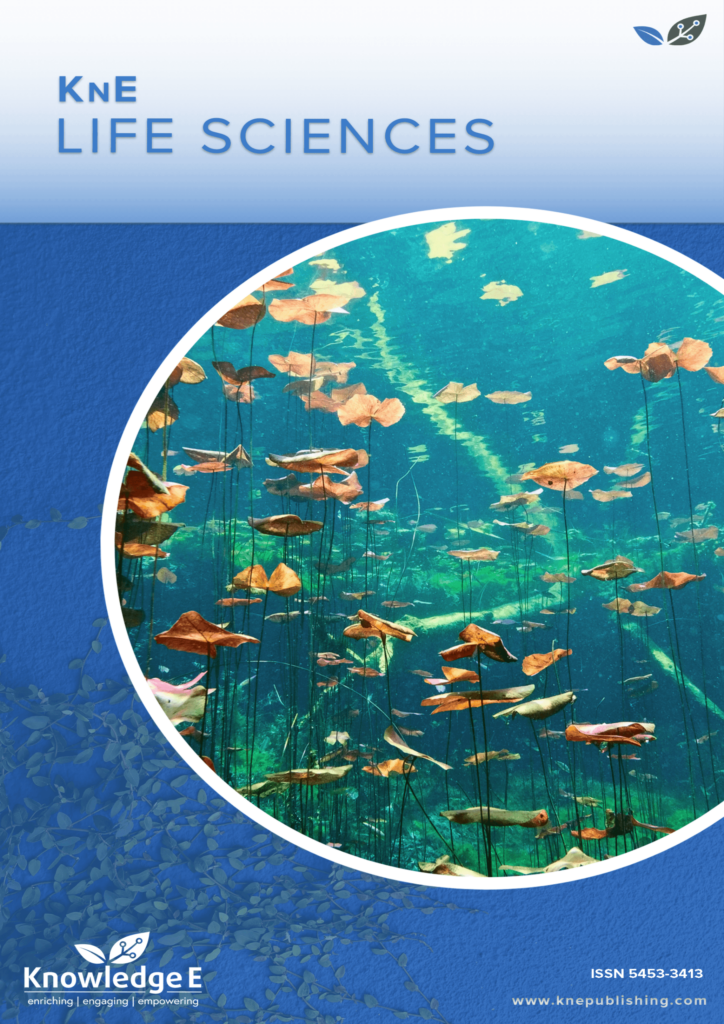
KnE Life Sciences
ISSN: 2413-0877
The latest conference proceedings on life sciences, medicine and pharmacology.
The Relationship between Age, Parity and Husband's Support and the Selection of Long-term Contraception Method (MKJP) By Woman of Childbearing Age
Published date:Mar 25 2021
Journal Title: KnE Life Sciences
Issue title: The 2nd International Scientific Meeting on Public Health and Sports (ISMoPHS 2020)
Pages:182–194
Authors:
Abstract:
The high birth rate of Indonesia has become a significant problem and requires special attention. As an effort to tackle the rapid population growth, the government has formulated a number of development and family planning programs. For instance, the National Family Planning programmes, which is mainly directed towards the use of the Long-term Contraception Method (MKJP); however, the actual usage rate of the programme is still low. This research aimed to examine the relationship between age, parity and husband’s support, and the MKJP selection by women of childbearing age in the working area of Dinoyo Public Health Centre, Malang City. This study was an analytical research with a cross-sectional design. The samples in this research were chosen through the purposive sampling method, with a total sample of 45 women. Data were collected through interviews and questionnaires. Data analysis was carried out using the Chi-Square test, with a significance level of < 0.05. The results showed that there was no significant relationship between the age and the selection of MKJP (sig. 0.461), between the parity and the selection of MKJP (sig. 0.522), and between the husband’s support and the selection of MKJP (sig. 0.460). Therefore, we conclude that there is no significant relationship between the age, parity and husband’s support, and the selection of MKJP by women of childbearing age in the working area of Dinoyo Public Health Centre.
Keywords: age, parity, husband’s support, long-term contraception methods
References:
[1] Rohan, H. H. (2017). Buku Kesehatan Reproduksi. Malang: Intimedia.
[2] BPS. (2018). Statistik Indonesia 2018. Jakarta: Badan Pusat Statistik.
[3] Sulistyawati, A. (2011). Pelayanan Keluarga Berencana. Semarang: Salemba Medika.
[4] Septalia, R. and Puspitasari, N. (2016). Faktor yang Mempengaruhi Pemilihan Metode Kontrasepsi. Jurnal Biometrika Dan Kependudukan, vol. 5, issue 2, pp.91-8.
[5] Asih, L. and Oesman, H. (2009). Faktor-Faktor yang Mempengaruhi Pemakaian Kontrasepsi Jangka Panjang. Analisis lanjut SDKI 2007. Jakarta: BKKBN.
[6] BKKBN. (2015). Rencana Strategis Badan Kependudukan dan Keluarga Berencana Nasional. Jakarta: BKKBN.
[7] Dinas Kesehatan Jawa Timur. (2018). Profil Kesehatan Provinsi Jawa Timur 2017. Surabaya: Dinas Kesehatan Jawa Timur.
[8] Aryati, S., Sukamdi. and Widyastuti, D. (2019). Faktor-Faktor yang Mempengaruhi Pemilihan Metode Kontrasepsi (Kasus Di Kecamatan Seberang Ulu I Kota Palembang). Majalah Geografi Indonesia., vol. 33, issue 1, pp.79-85.
[9] Susanti, S., and Kumalaswandari, M. T. (2019). Relationship of Age, Parity, and Husband Support with the Use of Long-Term Contraception Methods in Reproductive Age Women. Jurnal Kebidanan, vol. 9, issue 2, pp.168-73.
[10] Dewi, P. H. C. and Notobroto, H. B. (2014). Rendahnya Keikutsertaan Pengguna Metode Kontrasepsi Jangka Panjang Pada Pasangan Usia Subur. Jurnal Biometrika Dan Kependudukan., vol. 3, issue 1, pp.66-72.
[11] Harahap, Y. W., Hairani, N. and Dewi, S. S. S. (2019). Hubungan Dukungan Suami dan Umur Akseptor KB dengan Pemakaian Metode Kontrasepsi IUD. Indonesian Health Scientific Journal., vol. 4, issue 2, pp.29-36.
[12] Mahmudah, L. T. N. and Indrawati, F. (2015). Analisis Faktor yang Berhubungan dengan Pemilihan Metode Kontrasepsi Jangka Panjang (MKJP) pada Akseptor KB Wanita di Kecamatan Banyubiru Kabupaten Semarang. Unnes Journal of Public Health, vol. 4, issue 3, pp.76-85.
[13] Hastuty, M. and Afiah, A. (2018). Faktor-Faktor yang Mempengaruhi Perilaku Akseptor KB terhadap Pemilihan MKJP di Wilayah Kerja Puskesmas Tambang tahun 2018. Jurnal Doppler, vol. 2, issue 2, pp.1-12.
[14] Nuryanti, S. and Fitria, D. (2014). Pengaruh Faktor Internal dan Faktor Eksternal terhadap Pemilihan Alat Kontrasepsi pada Akseptor Baru di Kabupaten Bogor. Jurnal Ilmu Kesehatan Diagnosis, vol. 5, issue 5, pp.632-8.
[15] Indahwati, L., Wati, L. R. and Wulandari, D. T. (2017). Usia dan Pengalaman KB Berhubungan dengan Pemilihan Metode Kontrasepsi. Jounal of Issues in Midwifery, vol. 1, issue 2, pp.9-18.
[16] Budiarti, I., Nuryani, D. D. and Hidayat, R. (2017). Determinan Penggunaan Metode Kontrasepsi Jangka Panjang (MKJP) pada Akseptor KB. Jurnal Kesehatan., vol. 7, issue 2, pp.220-4.
[17] Canda, D., Sakung, J. and Yusuf, H. (2018). Hubungan Pengetahuan dan Dukungan Suami dengan Pemilihan Metode Kontrasepsi Jangka Panjang di Kelurahan Lolu Selatan Wilayah Kerja Puskesmas Birobuli. Jurnal Kolaboratif Sains, vol. 1, issue 1, pp.76-86.
[18] Oktaviani, A. S. (2018). Analisis Faktor Penggunaan Metode Kontrasepsi Jangka Panjang pada Akseptor KB di Wilayah Puskesmas Cilacap Utara II. Jurnal Kesehatan Ibu Dan Anak Akademi Kebidanan An-Nur, vol. 3, issue 1, pp.49-55.
[19] Sumartini, S. and Indriani, D. (2016). Pengaruh Keinginan Pasangan Usia Subur (PUS) dalam Penggunaan Kontrasepsi Jangka Panjang. Jurnal Biometrika Dan Kependudukan, vol. 5, issue 1, pp.27-34.
[20] Siswanto, R. and Farich, A. (2015). Faktor Pemilihan Metode Kontrasepsi Jangka Panjang (MKJP) pada Pasangan Usia Subur (PUS) di Wilayah Kerja Puskesmas Segala Mider Kota Bandar Lampung. Jurnal Dunia Kesmas, vol. 4, issue 3, pp.151-56.